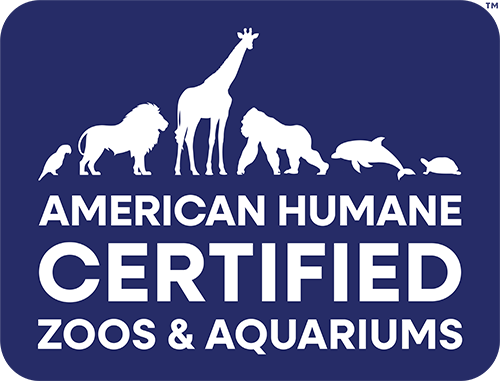Denver Zoo’s commitment to conserving wildlife and open spaces can be seen from our sustainability efforts on grounds to our 20+ year heritage managing successful field conservation programs around the world.
Our Impactful Conservation Strategy
As a recognized zoo-based observation organization and wildlife conservation leader, our impact is proven through our diligent efforts to:
- Invest in under-resourced systems and species with a high conservation need
- Improve ecological health
- Stay centered on inclusive conservation through trusting partnerships
- Unite to promote conservation optimism
- Maximize our impact through science, innovation, and collaboration
Our Dedication to Colorado Conservation
Denver Zoo not only works tirelessly to improve our planet for wild animals and wild places around the world, but also places a strong focus on our home state of Colorado through the following projects:
- Boreal Toad Breeding And ReintroductionCollapse
One of the species most severely affected by the deadly chytrid fungus is Colorado’s locally endangered boreal toad. In 2019, Denver Zoo became the first zoo to successfully breed this mountain-loving amphibian, ultimately releasing 682 tadpoles into the wild in Utah. In collaboration with Colorado Parks and Wildlife, we have now expanded our efforts to Colorado. In 2022, we released over 500 Zoo-born tadpoles into the Gunnison National Forest and launched a new community science project to mo
- Colorado Pika Project
The Colorado Pika Project leverages the skills and passion of more than 500 community science volunteers to collect detailed data on the climate-sensitive American pika. As an indicator species, these diminutive rabbit relatives help us understand the effect of climate change. The Colorado Pika Project is a partnership between Denver Zoo and Rocky Mountain National Park, in collaboration with the White River National Forest, Rocky Mountain National Park, Colorado Parks & Wildlife, the University of Colorado Boulder and Colorado Mesa University.
- Mt. Blue Sky Wildlife Safety Interventions
Collapse Mount Blue Sky, the highest paved road in North America, receives more than 200,000 visitors per year. Visitors bring salt, which attracts bighorn sheep and mountain goats into parking lots and trailheads—creating human-wildlife conflict. Denver Zoo, with support from National Geographic, is stepping in to help resolve this conflict. We are taking soil cores to identify salt sources, engaging visitors to stop wildlife-feeding and other destructive behavior and deterring mountain goats and bighorn sheep by spreading mountain lion urine in parking lots.
- Daniels Park Landscape Preservation + Bison Herd Management
By 1908, Denver Zoo’s 18 American bison were all that remained in Colorado. In our first official field conservation effort, the Zoo partnered with Yellowstone National Park officials and others to help propagate the endangered species. In 1914, the growing conservation herd was restored to Genesee Park and placed under the care of Denver Mountain Parks. Denver Zoo continues to work with DMP on bison conservation, prairie restoration and cultural reconciliation—and since 2021, we have worked with the City of Denver to Donate 47 bison to Native American communities as a form of reparations.
Our Commitment to International Conservation
We commit our time, training, and expertise to operate conservation programs at the Zoo in four other countries around the world, with two new exciting projects in Laos this year.
The first Laos project is in partnership with Association Anoulak. We will be helping to support biodiversity research and monitoring, conservation awareness and anti-poaching efforts in the Annamite Mountain Range of Laos. The two national conservation areas on either side of the mountain range are home to rare wildlife including the northern white-cheeked gibbon, Asian small-clawed otter, great hornbill, clouded leopard and the black breasted-leaf turtle species who also have ambassador residents at Denver Zoo.
The second project will take place at the Elephant Conservation Center in Sayaboury province, home to ex-logging elephants. Denver Zoo will work with the Nam Phouy National Biodiversity Conservation Area to help local staff re-wild bull elephants and build capacity to manage hull herds from these former working animals.
We’re excited to announce more international conservation projects are coming soon! They will take place in Indonesia and Uganda.

Water by the Numbers: One Facet of Sustainability
In addition to our field conservation programs, Denver Zoo is devoted to sustainability, with a strong focus on minimizing water usage for the betterment of the planet.
>70%
of Denver Zoo’s water usage has been reduced since 1999
92%
of water usage has been reduced in Pinnacol African Penguin Point from the prior habitat
2M
gallons of water or more will be saved per year with our remodeled sea lion habitat
250K
gallons of water saved per year using our Air Temperature Monitors
Gratitude to Our Generous Open Spaces Supporters
The Sparkjoy Foundation is a dedicated partner of Denver Zoo. Their grants over three years have supported Denver Zoo’s work in Daniels Park to restore grasslands and conserve bison and all the wildlife that depend on healthy ecosystems.
Volunteer and Board Member Olga Donahue is passionate about the health of the tree canopy of Denver Zoo. She established an endowed fund in the Colorado Zoological Trust for horticulture to ensure her granddaughter can come to the zoo with her children and enjoy shady spot. As a Wildlife Heritage Society member, Olga has also made a designation for Denver Zoo in her estate plans.


Help Us Conserve Wildlife and Open Spaces
Join our commitment to open spaces and support our mission to inspire communities to save wildlife for future generations.





